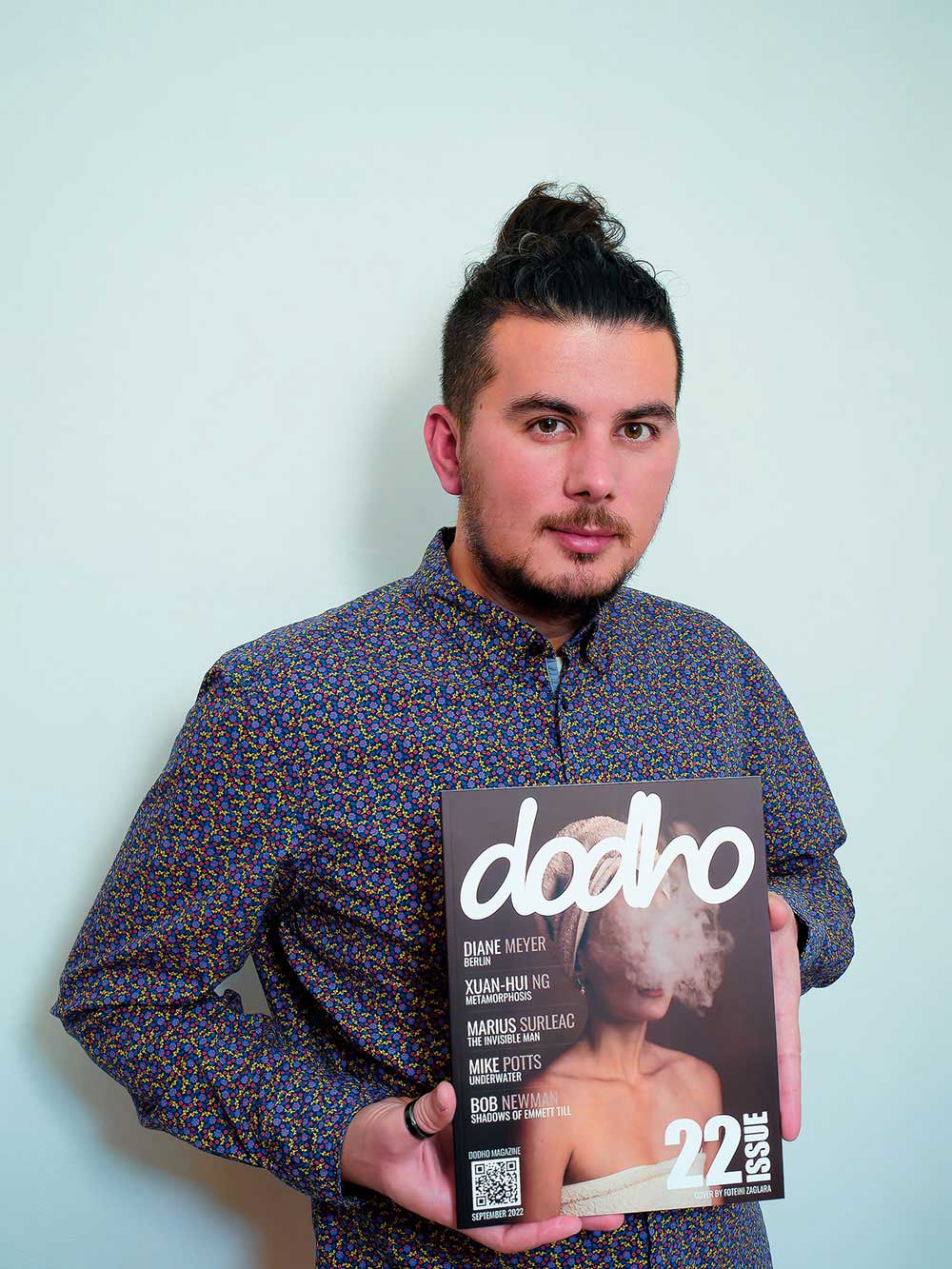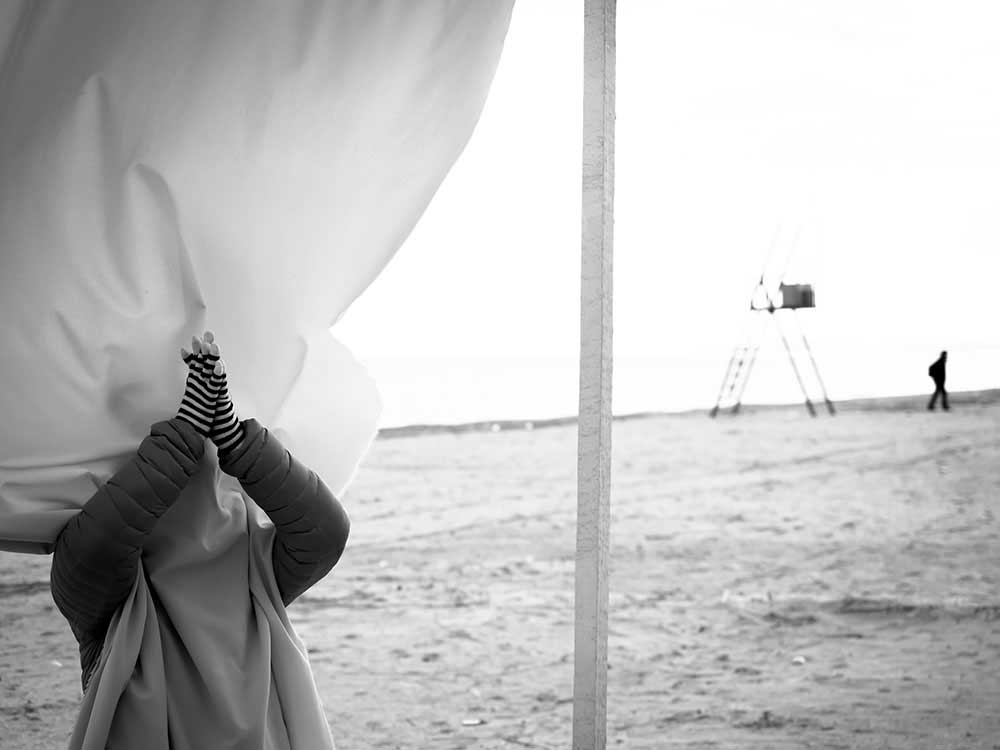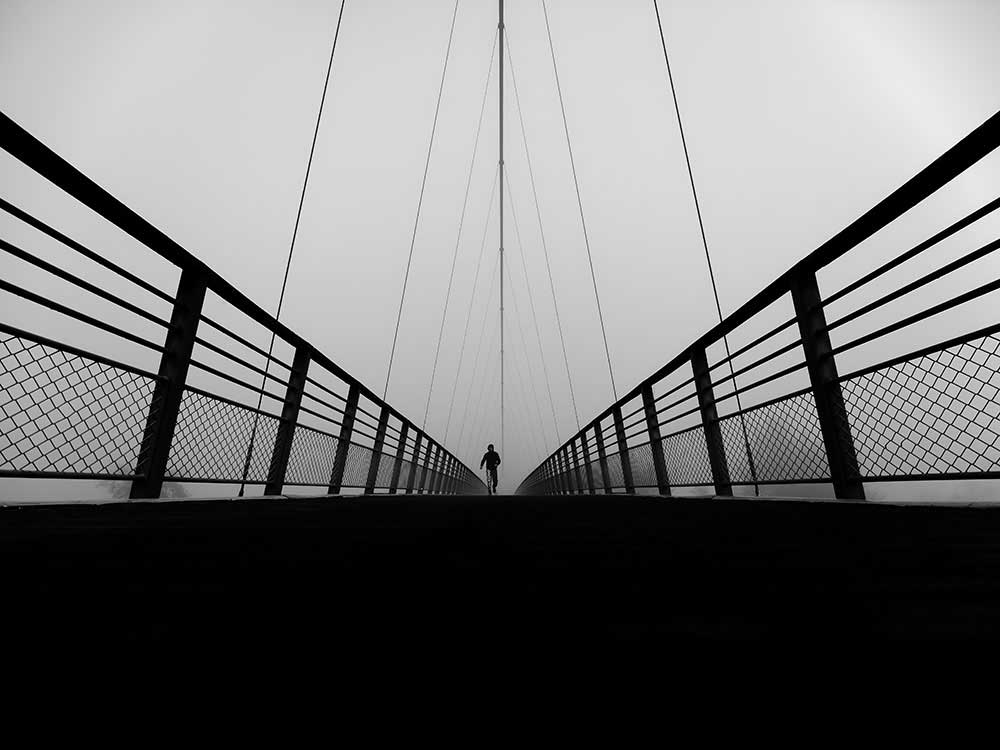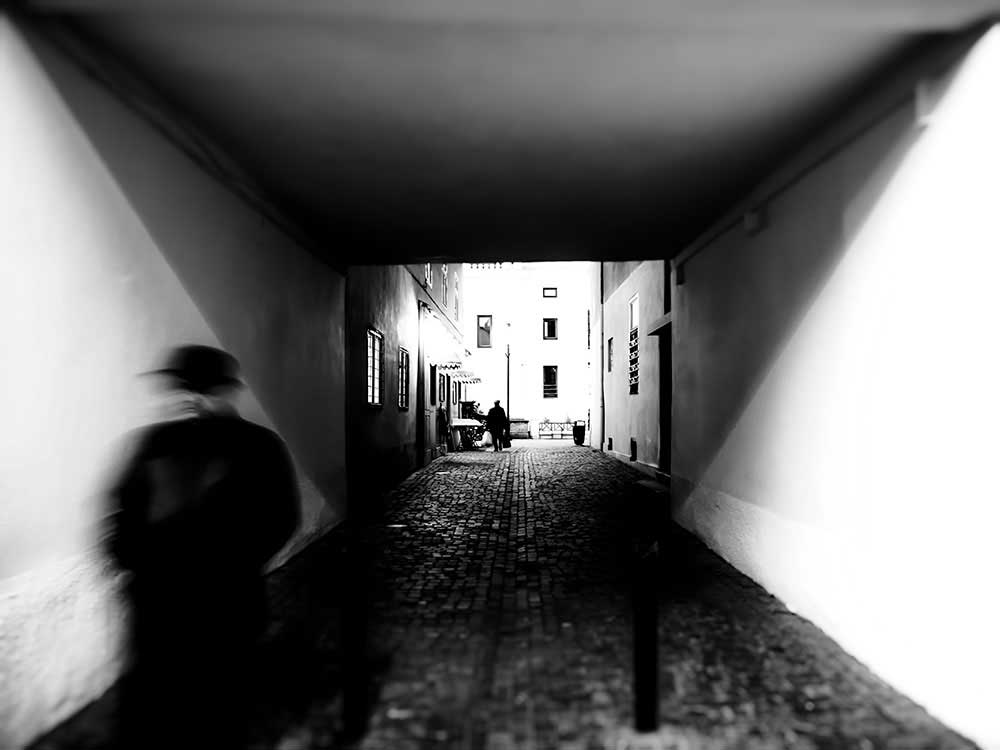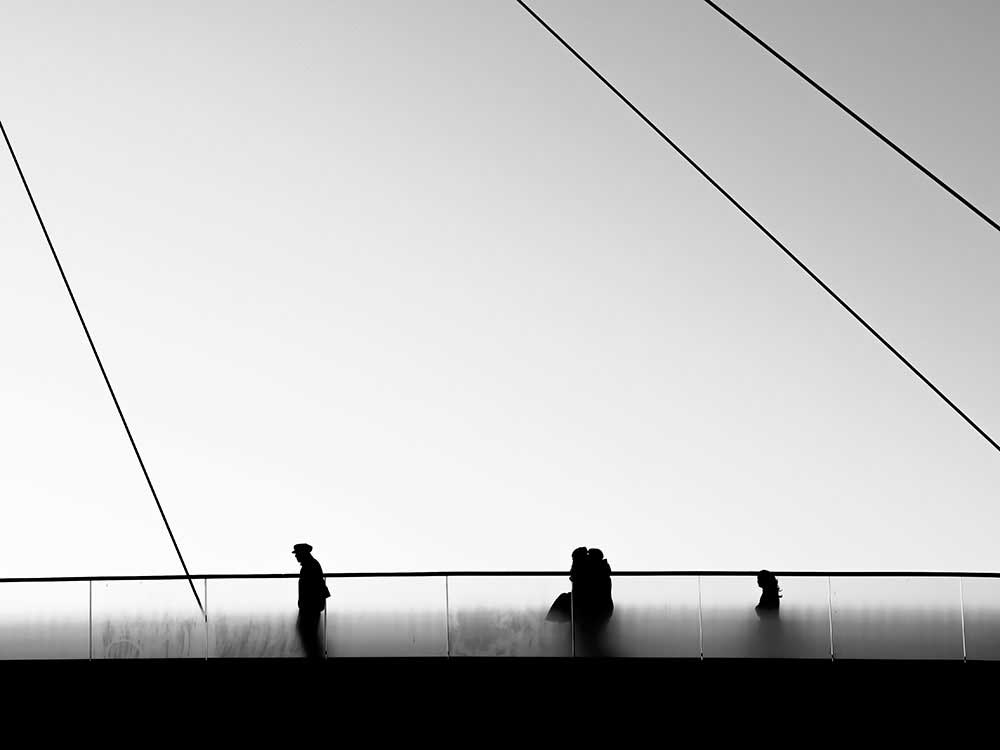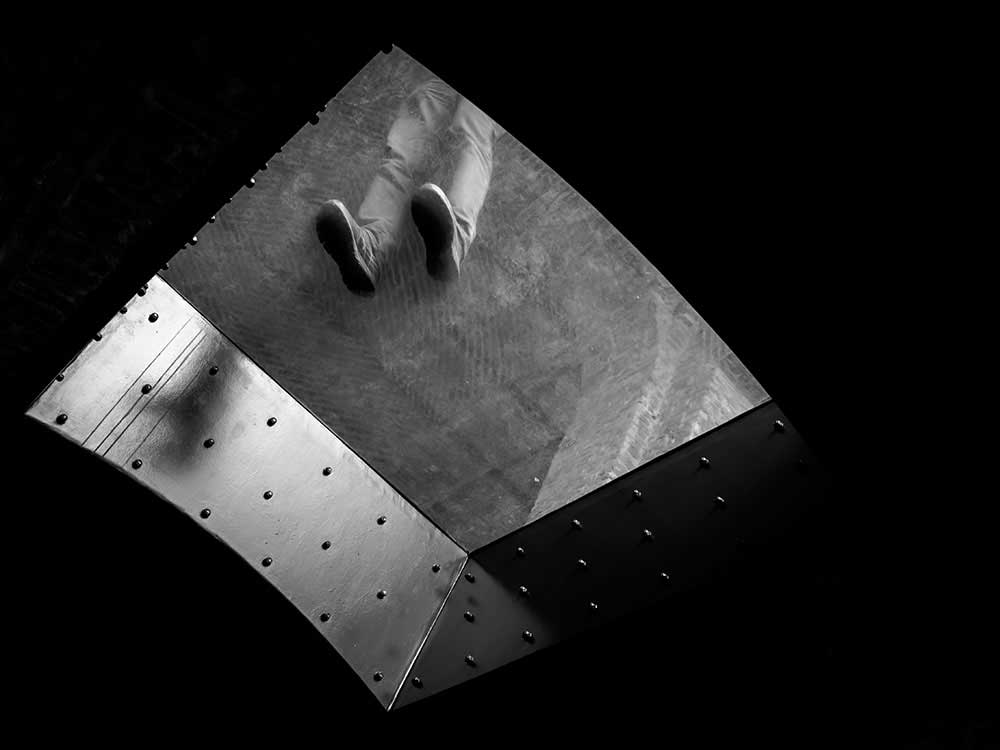Marius Surleac is a Romanian bioinformatician, photographer & writer. Their project “The invisible man” was selected and published in our print edition 22
Their photos have been published in magazines and curated galleries such as Dodho Magazine, 1x, One Eyeland, Vogue Italia, 100ASA, PiART, Terra Quantum, National Geographic – Your Shot, FineArt-Portugal, Photographize Monochrome, Worbz, BLUR Magazine, Marika Magazine, JaamZIN Magazine, Monopix, Eye Photo Magazine, Zebra Monochrome Magazine. Their interests are in abstract, architectural, street, macro and wildlife photography. [Official Website][Print Edition] [Digital Edition]
Can you tell us a little more about yourself? How did you get interested in photography?
I am from Romania. I have a BSc in Physics, a PhD in Biology (Bioinformatics) and I work as a Research Scientist III on Molecular Genetics at the National Institute for Infectious Diseases in Bucharest. I am also a writer and a translator – I write poetry and flash fiction, translate poetry En-to-Ro and vice-versa, I publish poetry in literary magazines worldwide. I do photography as a hobby. I like to listen to jazz music and to walk at least 10km daily. My interest in photography came suddenly about ten years ago when I found out about, and created a profile on, Instagram. I was doing photos with my phone at first and then I bought a semi-professional DSLR Nikon camera in 2015. From the first moment I fell in love with black and white photography. Probably, my background in Physics also had an impact on modelling my photographic style through time. For the last three years I’ve been shooting only with Olympus systems.
How would you define your general style photography? How do you get such a personal style?
I would define my style as candidly venturous and minimal. Candid because most of the photos I take in an instant, and venturous because I don’t have a particular idea in mind before I go out to take photos. The minimalism came a bit late, after retrospectively looking for the shots that I resonate mostly to. Usually, I take my camera and venture the streets to look for abstract and architectural elements that combine nicely in a geometric fashion, then I spare a few seconds to compose the frame in mind, just as I would like it to be. Aside from the architectural style that I regularly do, I also used to do street photography – I look for minimalism here in both composition and emotions. I tend to combine, when possible, the street with the architectural in a simple manner. In street photography I try to experiment as much as possible, especially with long & multiple exposures and panning, but only when I find the right place and time, that would allow that. On the other hand, I try to combine the minimalism with high-key and low-key photography to accentuate the subjects.
Which photographers have inspired you in your photographic work?
I don’t really have a favorite photographer. I usually try to be a self-taught person, therefore, at first, I had no idea about well-known photographers. I was more attracted by paintings, especially those of surrealist painters (e.g. Salvador Dali, René Magritte) and other artists that were rather focused on geometry (e.g. Piet Mondrian, Maurits Escher) and if I’m looking for the mood then the works of Hieronymus Bosch are very inspiring. The photographers I resonate the most with are Henri Cartier-Bresson, Misha Gordin, Jason M. Peterson, Antonio E. Ojeda, Jörg Heidenberger. I would add Andrei Tarkovsky to the list, since his movies are really inspiring in compositions.
Can you tell us about the Invisible Man project recently published in our magazine?
The name “Invisible Man” comes from the photo with the same name, the BW street photo in which there are some kids on a pedestrian bridge and somewhere in the frame is an old man that is not present in the reflection (I used some of the basic physics tricks). Hence, it came to my mind the idea of sole people – even though we are in a group we still can be alone. The same with the old man – he was alone, walking on that bridge, he was lost in his thoughts and such moments could happen to anyone, even if in a family, or if one is involved in a discussion, there could be short moments of solitude, that most of the time could go unnoticed. That’s what I try to capture in my street photos, and even in my architectural shots – even if we can’t see the person, it doesn’t mean that some elements are there for no reason; a story can be told behind every shot, we just have to imagine who triggers it.
How do you find that moment? What does a final Marius Surleac´s image have to have?
Usually I just go out to find the moment – I venture the streets a lot and look up everywhere for a possible subject. It wasn’t like that at the beginning, but in the last two years, or so, I noticed that even if I don’t have the camera with me, I still look everywhere around, as if I’m in a Hansel & Gretel story and I have to find my way back. Somehow, since I started to take photography seriously, I formed an automatism in which I scan everything around me. I also had a photographic memory long before I started taking photos. This helps me reconnect with various places that are worth shooting again. Usually, I can say a photo is final if it has a story to tell, a good composition, something that keeps me (or anyone else) connected more than just a few seconds. To cut the answer short, the final image needs to have a combination of elements: the composition with all the geometry, the subject that could be obvious or not (usually I enjoy the most the photos where the whole message is not easily seen), the contrast (and here I refer to an antithesis between elements) and the minimalism (where it is possible).
What’s your useable-to-unusable ratio when you review images from a shoot?
It depends. Typically, the useable photos are like 80% now compared with 10-20% maximum when I began taking photos. I don’t rush on shooting anything I see. However, from the 80% only about 5-10% I consider using further for magazine and photography contests submissions.
What photograph would you like to do and still have not been able to capture? What is the photo you will never do?
I would like to do astrophotography, light painting photography and drone photography, but I didn’t really have the chance due to the fact that I would have to travel a lot to low light pollution places and I don’t have a car nor wanting to drive one, I also don’t have a drone. I would also want to try more portrait photography. I couldn’t say that there is a photography style I will never do, but the one I’m less attracted to is wedding photography, for various reasons.
What future plans do you have? What projects would you like to accomplish?
I have such a busy schedule on my daily basis activities that I couldn’t plan something very steady on photography. I would like to travel abroad more, especially for architecture photography, since in Romania (or at least in big cities throughout the country) the modern architecture is quite similar in elements and colors, or other more interesting buildings or facades are surrounded by various noisy elements (such as lots of cables between street poles) or are very dirty. I would also like to approach various styles as the one mentioned on the previous question. For me, photography is about traveling, discovering new places, socializing and doing something else that would avoid routine, so as long as these conditions are met, then it’s absolutely fine with the current plans



